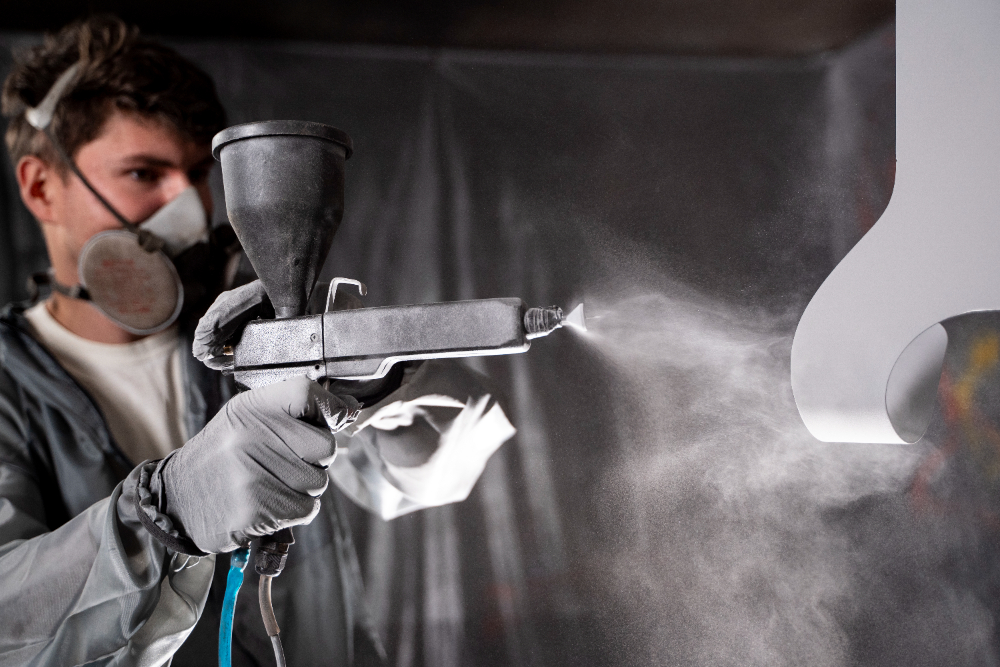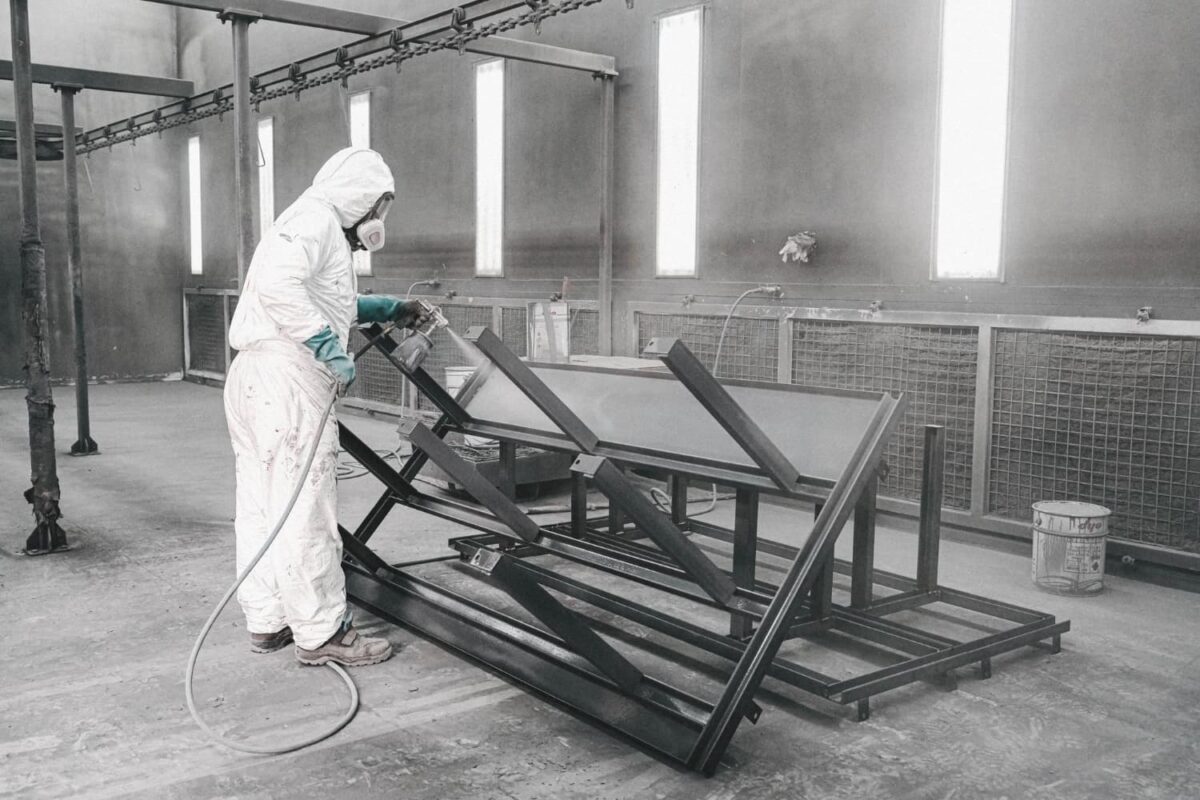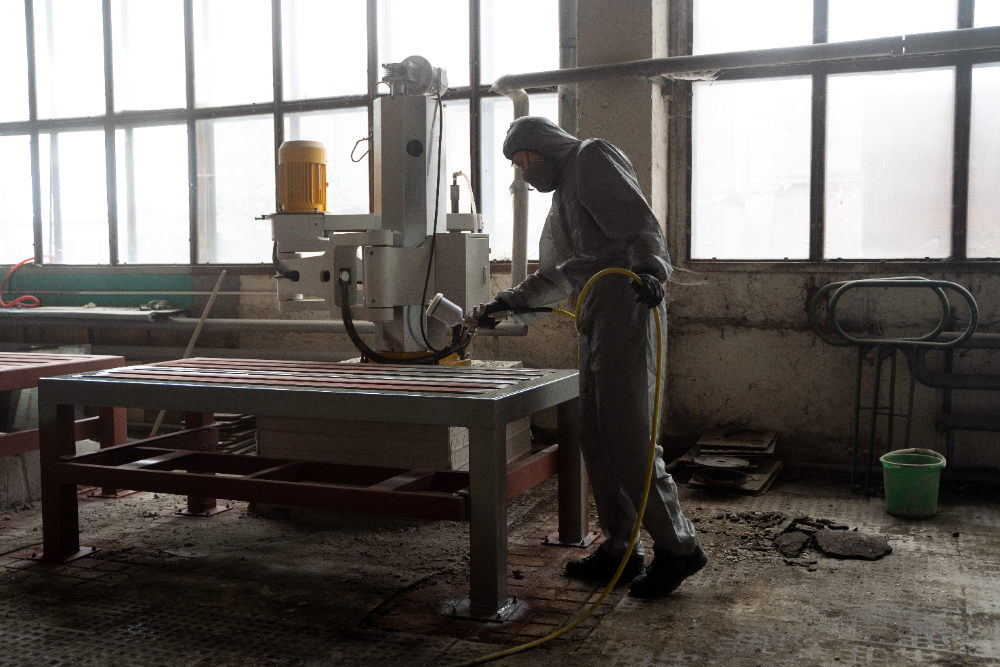Powder coating systems have revolutionized the manufacturing process by offering a durable, efficient, and environmentally-friendly alternative to traditional liquid paints. This guide explores the different types of powder coating systems available, giving you the knowledge and tools you’ll need to make an informed and strategic decision about which powder coating system is best for your needs.
Defining Powder Coating and Its Applications
Powder coating is an advanced method of applying a decorative and protective finish to a wide range of materials and products. The technique involves the application of a dry powder that can be thermoset or thermoplastic onto a surface. The coated item is then placed in an oven where the powder melts, forming a uniform layer that looks good and is durable.
Applications Across Industries
Powder coatings are used throughout various industries, including automotive, architecture, appliances, and consumer products. The method is particularly valued for coating aluminum components, where durability and appearance are of great importance.
Exploring Different Powder Coating Systems
There are several powder coating systems available, each suited to specific applications and environments. The choice of system can affect performance, cost, and sustainability.
Manual Powder Coating Systems
Advantages and Uses
Manual powder coating systems are operated by skilled workers who apply the powder to the substrate by hand. This type of powder coating is particularly useful for small-scale operations or complex parts that require precision. Manual systems allow for greater control over the thickness of the coat, making them ideal for prototypes or intricate components where detail is essential.
Limitations
As a negative, manual systems can be time-consuming and require significant skill and experience. They are less suitable for high-volume production due to the potential for inconsistency in coating thickness and finish.
Automated Powder Coating Systems
Efficiency and Consistency
Automated powder coating systems involve the use of machinery to apply the powder. These systems are designed for high-volume production where consistency and speed are important. Automated processes ensure uniform application, reducing waste and improving efficiency.
Technical Requirements
Despite their benefits, automated systems require a substantial initial investment and advanced technical knowledge to operate and maintain the equipment. They are best suited for large-scale operations where the economy of scale can justify the expense.
Thermoset vs. Thermoplastic Powders
The type of powder used in the coating process can also vary, with two main categories being thermoset powders and thermoplastic powders.
Characteristics of Thermoset Powders
Thermoset powders undergo a chemical change when exposed to heat, resulting in a hardened layer that is resistant to melting or further heat softening. This makes them ideal for high-heat applications. Common types include epoxy, polyester, and acrylic powders, each offering unique properties in terms of hardness, flexibility, and resistance to UV or chemical exposure.
Properties of Thermoplastic Powders
Thermoplastic powders, on the other hand, do not change chemically during the curing process. Instead, they melt and flow into a smooth layer that solidifies upon cooling. This type of powder can be reheated and reshaped, offering advantages in adhesion and durability. However, they generally offer less resistance to high temperatures compared to thermosets.
Key Equipment Used in Powder Coating Systems
The effectiveness and quality of powder coatings relies heavily on the equipment used.
Essential Components
Central to any powder coating system is the spray gun, booth, and curing oven. The spray gun can be manual or automatic, and it applies the powder using either an electrostatic method or tribo charging (friction-based). The booth collects and recycles overspray powders, minimizing waste, while the curing oven completes the process and results in an even, durable finish.
Advanced Options
For larger or more advanced operations, additional equipment such as conveyors, pre-treatment tanks, and recovery systems might be integrated to improve efficiency and output quality.
Environmental Impact and Economic Considerations
Environmental Benefits
Powder coatings minimize volatile organic compound (VOC) emissions, which are prevalent in liquid paints. Moreover, the overspray can be reclaimed and recycled, significantly reducing waste. This eco-friendly coating process aligns with modern sustainability goals in manufacturing.
Economic Efficiency
While the initial costs of establishing a powder coating system can be high, the long-term benefits of reduced waste and improved efficiency often lead to increased profitability. The longevity and reduced maintenance needs of powder-coated products further contribute to cost savings.
Future Trends in Powder Coating
Innovations and Developments
The adoption of advanced robotics and AI for automated systems is further enhancing precision and reducing operational costs. Meanwhile, ongoing research into new powder formulations offers improvements in durability and environmental impact.
Adaptation to Market Needs
As industries strive for more sustainable practices, the demand for innovative and efficient powder coating solutions is likely to increase, signaling a continuing evolution of this versatile technology.
FAQ Section
What types of powder coating systems are best for aluminum parts?
Automated systems are often preferred for aluminum, especially in large volumes, due to their consistency and efficiency. Thermoset powders are commonly used for their heat resistance and durability.
How do powder coating systems compare economically to traditional painting methods?
While the initial setup cost is higher, powder coating systems reduce long-term costs through less waste and longevity of the coating, making them economically viable over time.
What is the difference between thermoset and thermoplastic powders?
Thermoset powders chemically cure when heated, creating a resistant layer, while thermoplastic powders melt and can be reshaped, though they may not withstand high temperatures as well as thermosets.
Can powder coatings be applied to non-metal surfaces?
Yes, with proper surface preparation and the right type of powder, powder coatings can also be applied to materials like MDF, glass, and some plastics.



